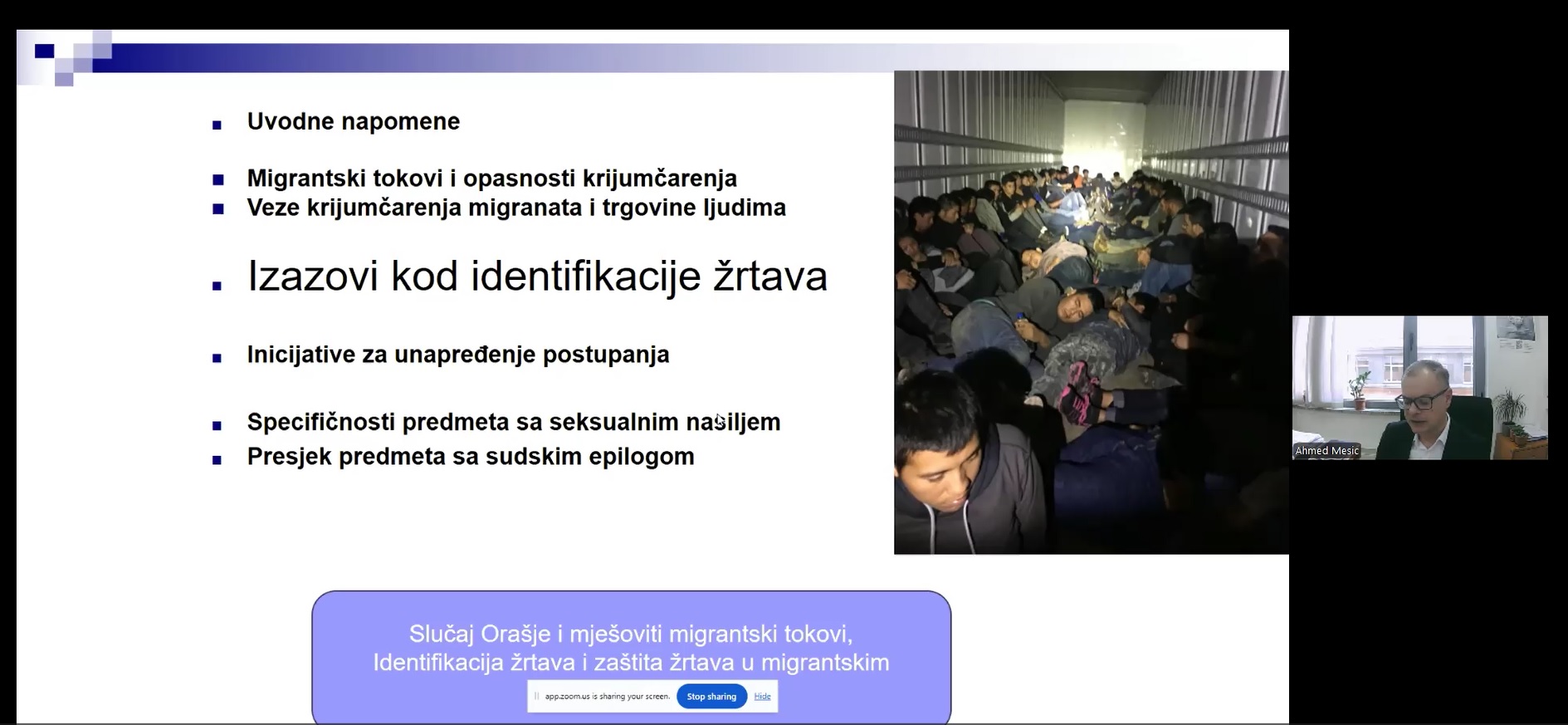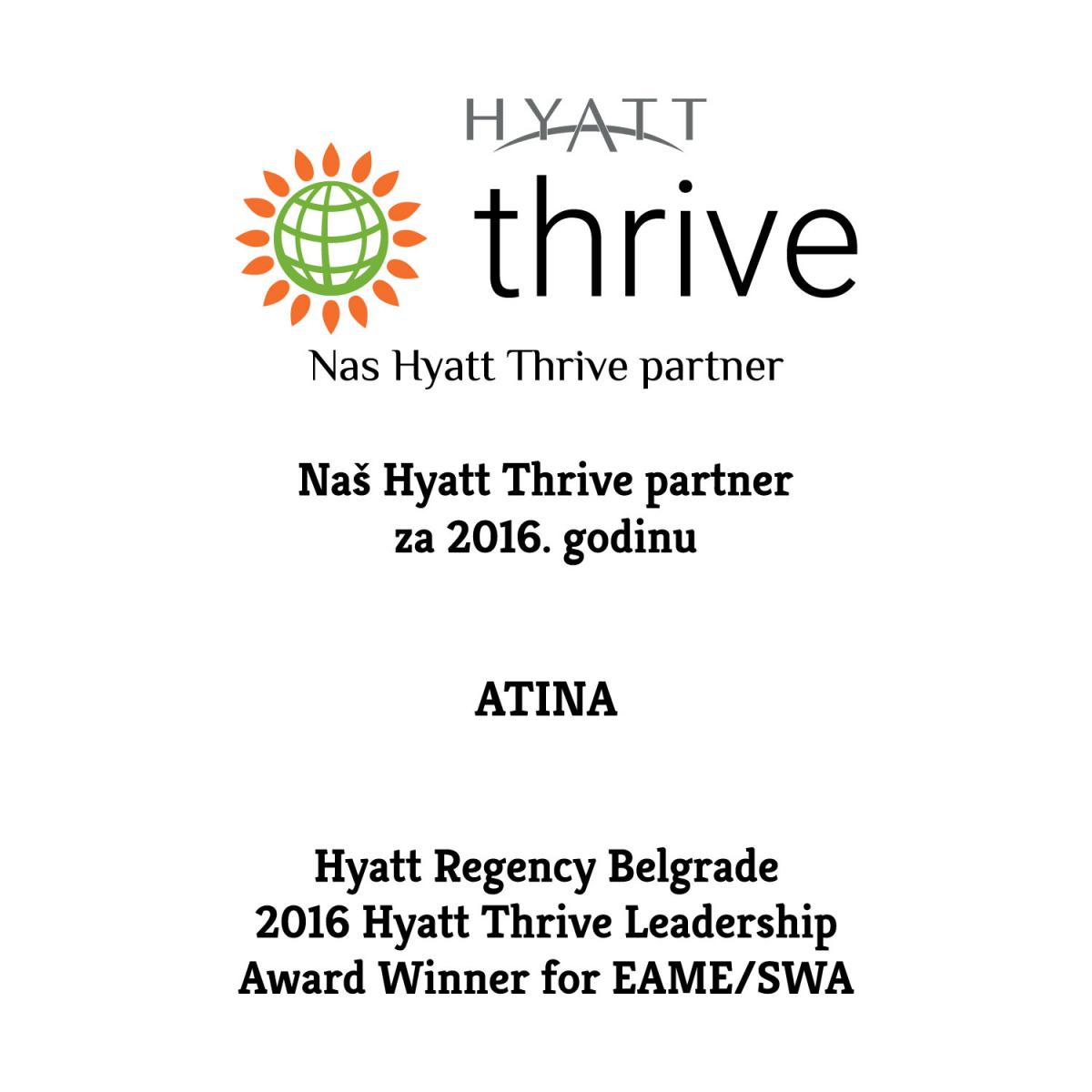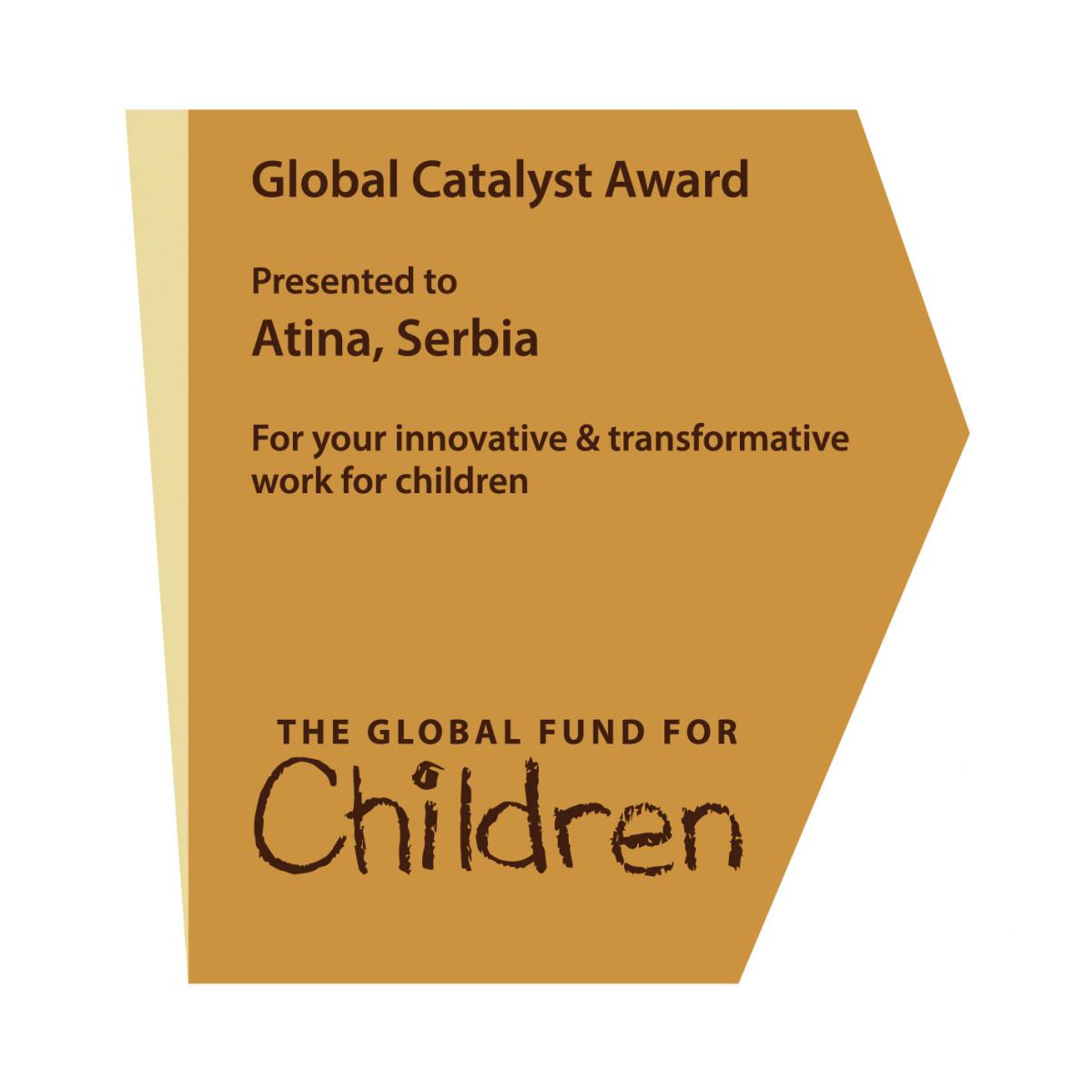Hotline: +381 61 63 84 071
New approaches to combat human trafficking and gender-based violence among migrants

Strengthening regional cooperation: New approaches to combat human trafficking and gender-based violence among migrants
Report from the Second community of practice: Enhancing joint responses to human trafficking and gender-based violence among migrant populations
On March 24, 2025, the second Community of Practice meeting under the project Women at the Crossroads: Strengthening the Response to Modern Slavery, Smuggling, and Gender-Based Violence Among Migrants in Serbia was held via Zoom. The event brought together 35 experts from Serbia and Bosnia and Herzegovina, including representatives from civil society organizations, governmental institutions, and international agencies. The project is implemented by NGO Atina and supported by the British Embassy in Belgrade.
Jelena Hrnjak (Atina) opened the session, followed by a detailed presentation from Prosecutor Ahmed Mešić of Bosnia and Herzegovina’s Prosecutor’s Office, who leads the Department for Combating Human Trafficking and Smuggling. Prosecutor Mešić shared precedent-setting cases that involved the identification and prosecution of human trafficking crimes against unaccompanied minor migrants, emphasizing the importance of respecting human rights throughout judicial and law enforcement procedures.
Notably, Prosecutor Mešić highlighted successful prosecutions of organized crime networks responsible for trafficking and sexual exploitation within mixed migration flows. These cases underscore the critical role of specialized and sensitized prosecutors, police officers, and frontline responders in victim identification, evidence collection, and safeguarding victim testimony, especially in cases of sexual violence where direct evidence is often limited.
Participants discussed growing threats, such as the increased ruthlessness of smugglers, the expanded presence of Frontex at regional borders, and risks associated with prolonged migrant stays in transit centers that provide traffickers with exploitation opportunities. The differentiation between smuggling of and trafficking for labor exploitation, with examples from Spain and France, was emphasized.
Prosecutor Mešić presented multiple grave incidents, including kidnappings, extortion, and forced labor perpetrated by organized criminal groups. One case involving a ransom demand of €10,000 resulted in a guilty verdict supported by comprehensive evidence, including victim testimonies, forensic data, and international cooperation through EUROPOL. These efforts illustrate the necessity of cross-border coordination in combating trafficking networks.
The Orašje case, involving sexual exploitation of unaccompanied minors in reception centers, was discussed in detail. Coordinated raids and thorough investigations led to convictions. They underscored the importance of trauma-informed approaches and the legal principle of non-punishment for victims compelled to commit crimes under coercion.
Despite these advances, challenges in victim identification persist due to migrants’ fear of reporting abuse, cultural and language barriers, and mistrust of authorities. The 2024-2027 Human Trafficking Strategy of Bosnia and Herzegovina prioritizes mixed migration flows and includes plans to update a mobile application for enhanced victim identification.
Prosecutor Mešić also shared insights from the UK, where a rigorous evaluation system for unaccompanied minors and strong government-NGO cooperation serve as a model for adequate victim protection and age determination procedures.
Key Recommendations from the 2nd community of practice were:
-
Strengthen cross-border and interagency cooperation: Sustained coordination between law enforcement, judicial bodies, and civil society across regional borders is essential for effective investigation, prosecution, and victim support.
-
Enhance specialized training: Continuous capacity-building for prosecutors, police, and first responders on trauma-informed victim identification, particularly regarding unaccompanied minors and gender-based violence, is critical.
-
Implement and uphold the non-punishment principle: Prosecutors and judicial bodies must rigorously apply guidelines protecting victims from criminal liability for actions committed under coercion or victimization.
-
Enhance victim identification tools: Update technological tools, such as mobile applications, and incorporate emerging trafficking modalities to support frontline responders in making timely and accurate identifications of victims.
-
Enhance prevention and awareness efforts: Media campaigns, targeted information at reception and transit centers, and community outreach must be expanded to raise awareness about trafficking risks and encourage reporting.
-
Develop age and risk assessment protocols: Implement standardized, multidisciplinary approaches to age determination and risk assessment to protect unaccompanied minors from exploitation.
-
Enhance international information exchange by strengthening data sharing with international law enforcement networks (EUROPOL, SELEC, INTERPOL) and improving diplomatic channels for verifying migrant identity and origin.
-
Support victims’ reintegration and psychological care: Ensure comprehensive social, psychological, and legal support for trafficking survivors, including long-term assistance to address trauma.
The meeting reaffirmed that combating human trafficking and gender-based violence in mixed migration flows requires a holistic, victim-centered, and cooperative approach. Sharing best practices, adopting innovative tools, and reinforcing legal frameworks remain vital. The experiences shared by Bosnia and Herzegovina provide valuable lessons and models for regional and international stakeholders working to strengthen responses to these complex crimes.












 FACEBOOK
FACEBOOK TWITTER
TWITTER YOUTUBE
YOUTUBE